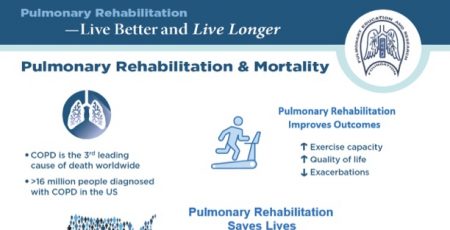16 Feb A Detailed Guide to Exercising With COPD – Part 1
We’ve written many times in this blog about the importance of exercising when you have COPD. The more you exercise, the better you’ll be able to utilize the oxygen that your lungs supply to you, which means that you’ll perform daily tasks with more ease and your overall sense of well-being will improve. Well, now we’re offering some practical tips and suggestions to help you get the best results from your exercise.
It may seem counterintuitive to engage in an exercise program when you’re short of breath, but exercise can actually improve your shortness of breath. Multiple studies have proven this to be true. While exercise cannot reverse your COPD, it certainly can improve your quality of life as you deal with the disease.
Talk With Your Doctor First
As with any exercise program that represents a departure from your former activities, you should consult your doctor before engaging in an exercise program now. Ask for guidance on what types of exercise, and at what intensity and frequency, might be best for you, and what kind of exercise you should avoid. And be sure to ask for instructions on how to use your medication before, during, and after your exercise sessions.
Aerobic Exercise
Exercise that involves steady physical activity is greatly beneficial to you; it requires the use of large muscle groups, and improves the strength of your heart and lungs. The more you perform aerobic exercise, the more efficient your body becomes in delivering oxygen to your muscles, which increases your ability to engage in activities for a longer period of time. With a consistent schedule of aerobic exercise, your heart rate and blood pressure will decrease, and as a result your heart won’t have to work as hard when you exercise. Now we’ve come full circle; if your heart isn’t working as hard and your muscles are more efficient in using the oxygen that’s delivered to them, your breathing will improve.
Low-Impact Aerobic Exercise
There are a variety of activities you can engage in that work your heart and your muscles on an extended basis – and they don’t all involve using exercise equipment. Here’s a partial list of what exercise you might do to help your COPD:
- Walk on a treadmill or outside
- Ride a bike
- Use an elliptical machine
- Swim
- Run errands (you can enhance this by parking a little farther from your destination)
- Play with your grandchildren – or attend their events and stand rather than sit
- Practice yoga (Depending upon the type of yoga, the aerobic benefit can be a lot or a little.)
- Take a low-level spinning class
- Row on an ergometer
High-Impact Aerobic Exercise
If your doctor has given you the go-ahead for more rigorous exercise, you can:
- Jog or run on a treadmill instead of walking
- Jog/run outside
- Jump rope
- Take an aerobics class
- Take a step class
Strength-Building Exercise
You might not think that weight lifting will help your breathing, but in fact, it can! When you lift weights, you build strength by building muscle mass and muscle efficiency – including your respiratory muscles. Over time, as your muscle mass and efficiency build, your use of oxygen becomes more efficient. This can indeed help your breathing. And don’t think that you have to do heavy-duty lifting; even if you use moderate weights in your exercise sessions, you’ll be strengthening your muscles over time and helping your body cope better with COPD.
Breathing Exercises
Learning effective breathing exercises can help you stick with your exercise program, because you’ll be prepared to handle shortness of breath when it occurs. We’ve published posts in the past on pursed-lip breathing. You can also employ diaphragmatic breathing as a daily practice to help improve your breathing efficiency overall. Here’s how:
- Lie on your back with your knees bent and feet placed on your bed or floor
- Place one of your hands on your upper chest and the other on your abdomen
- Inhale through your nose and exhale through your mouth three times
- Concentrate on keeping your chest still while breathing; allow only your abdomen to move.
In our next blog: guidelines on exercise duration, frequency, and best practices for maintaining a safe exercise regimen.
Information for this article was obtained from the COPD Store.





No Comments